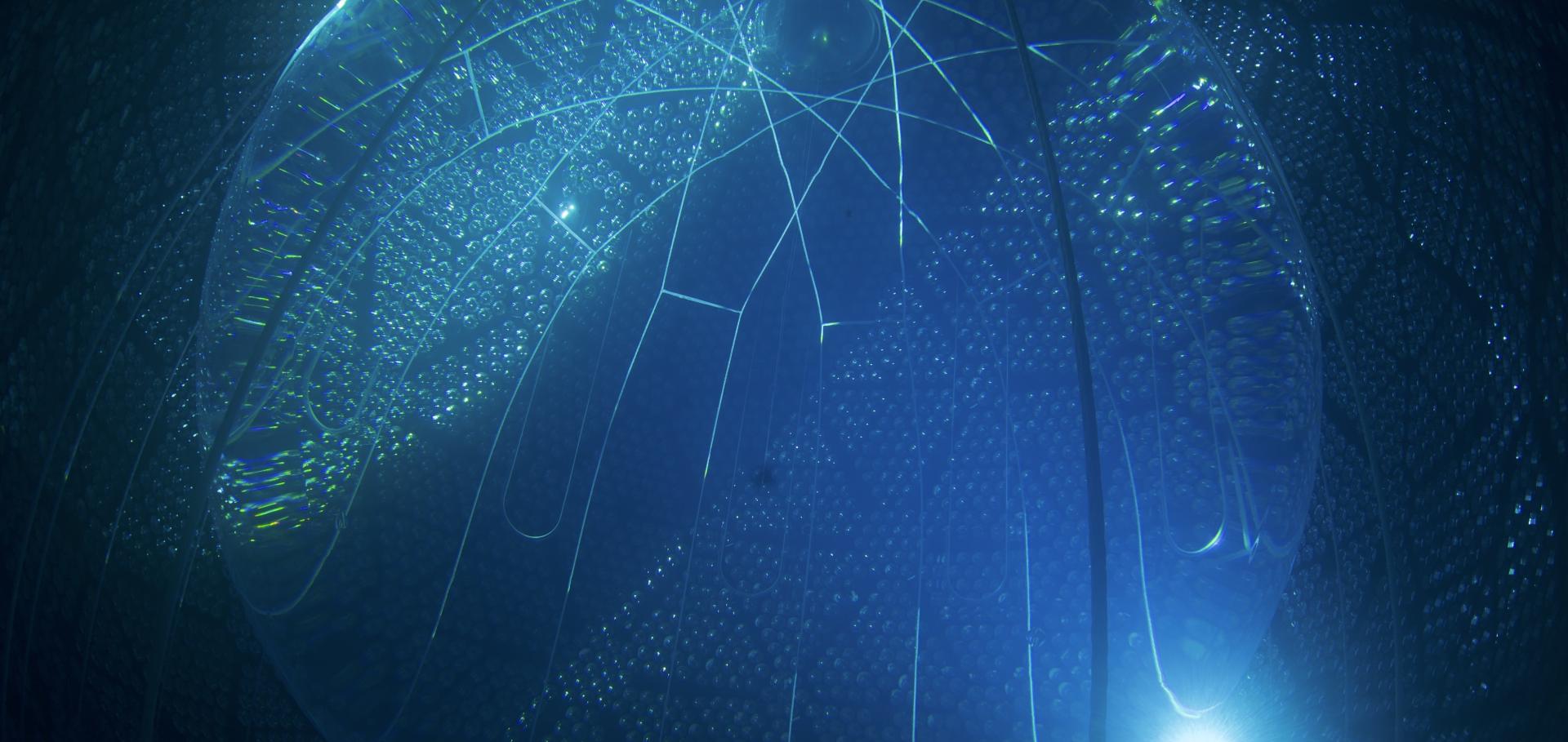Search for WH production with a light Higgs boson decaying to prompt electron-jets in proton-proton collisions at √s=7 TeV with the ATLAS detector
New Journal of Physics 15 (2013)
Abstract:
A search is performed for WH production with a light Higgs boson decaying to hidden-sector particles resulting in clusters of collimated electrons, known as electron-jets. The search is performed with 2.04 fb-1 of data collected in 2011 with the ATLAS detector at the Large Hadron Collider in proton-proton collisions at . One event satisfying the signal selection criteria is observed, which is consistent with the expected background rate. Limits on the product of the WH production cross section and the branching ratio of a Higgs boson decaying to prompt electron-jets are calculated as a function of a Higgs boson mass in the range from 100 to 140 GeV. © CERN 2013 for the benefit of the ATLAS Collaboration, published under the terms of the Creative Commons Attribution 3.0 licence by IOP Publishing Ltd and Deutsche Physikalische Gesellschaft. Any further distribution of this work must maintain attribution to the author(s) and the published article's title, journal citation and DOI.Search for extra dimensions in diphoton events from proton-proton collisions at √s= 7 TeV in the ATLAS detector at the LHC
New Journal of Physics 15 (2013)
Abstract:
The large difference between the Planck scale and the electroweak scale, known as the hierarchy problem, is addressed in certain models through the postulate of extra spatial dimensions. A search for evidence of extra spatial dimensions in the diphoton channel has been performed using the full set of proton-proton collisions at √s = 7 TeV recorded in 2011 with the ATLAS detector at the CERN Large Hadron Collider. This dataset corresponds to an integrated luminosity of 4.9 fb1. The diphoton invariant mass spectrum is observed to be in good agreement with the Standard Model expectation. In the context of the model proposed by Arkani-Hamed, Dimopoulos and Dvali, 95% confidence level lower limits of between 2.52 and 3.92 TeV are set on the ultraviolet cutoff scale MS depending on the number of extra dimensions and the theoretical formalism used. In the context of the Randall-Sundrum model, a lower limit of 2.06 (1.00) TeV at 95% confidence level is set on the mass of the lightest graviton for couplings of k/MPl = 0.1(0.01). Combining with the ATLAS dilepton searches based on the 2011 data, the 95% confidence level lower limit on the Randall-Sundrum graviton mass is further tightened to 2.23 (1.03) TeV for k/ MPl= 0.1(0.01).© CERN 2013 for the benefit of the ATLAS Collaboration.Multi-channel search for squarks and gluinos in √s = 7 TeV pp collisions with the ATLAS detector at the LHC
European Physical Journal C 73:3 (2013)
Abstract:
A search for supersymmetric particles in final states with zero, one, and two leptons, with and without jets identified as originating from b-quarks, in 4.7 fb−1 of √s = 7 TeV pp collisions produced by the Large Hadron Collider and recorded by the ATLAS detector is presented. The search uses a set of variables carrying information on the event kinematics transverse and parallel to the beam line that are sensitive to several topologies expected in supersymmetry. Mutually exclusive final states are defined, allowing a combination of all channels to increase the search sensitivity. No deviation from the Standard Model expectation is observed. Upper limits at 95 % confidence level on visible cross-sections for the production of new particles are extracted. Results are interpreted in the context of the constrained minimal supersymmetric extension to the Standard Model and in supersymmetry-inspired models with diverse, high-multiplicity final states.Measurement of upsilon production in 7 TeV pp collisions at ATLAS
Physical Review D - Particles, Fields, Gravitation and Cosmology 87:5 (2013)
Abstract:
Using 1.8 fb-1 of pp collisions at a center-of-mass energy of 7 TeV recorded by the ATLAS detector at the Large Hadron Collider, we present measurements of the production cross sections of Υ(1S,2S,3S) mesons. Υ mesons are reconstructed using the dimuon decay mode. Total production cross sections for pT<70 GeV and in the rapidity interval |yΥ|<2.25 are measured to be, 8.01±0.02±0.36±0.31 nb, 2.05±0.01±0.12±0.08 nb, and 0.92±0.01±0. 07±0.04 nb, respectively, with uncertainties separated into statistical, systematic, and luminosity measurement effects. In addition, differential cross section times dimuon branching fractions for Υ(1S), Υ(2S), and Υ(3S) as a function of Υ transverse momentum pT and rapidity are presented. These cross sections are obtained assuming unpolarized production. If the production polarization is fully transverse or longitudinal with no azimuthal dependence in the helicity frame, the cross section may vary by approximately ±20%. If a nontrivial azimuthal dependence is considered, integrated cross sections may be significantly enhanced by a factor of 2 or more. We compare our results to several theoretical models of Υ meson production, finding that none provide an accurate description of our data over the full range of Υ transverse momenta accessible with this data set.Search for new phenomena in events with three charged leptons at √s=7 TeV with the ATLAS detector
Physical Review D - Particles, Fields, Gravitation and Cosmology 87:5 (2013)


